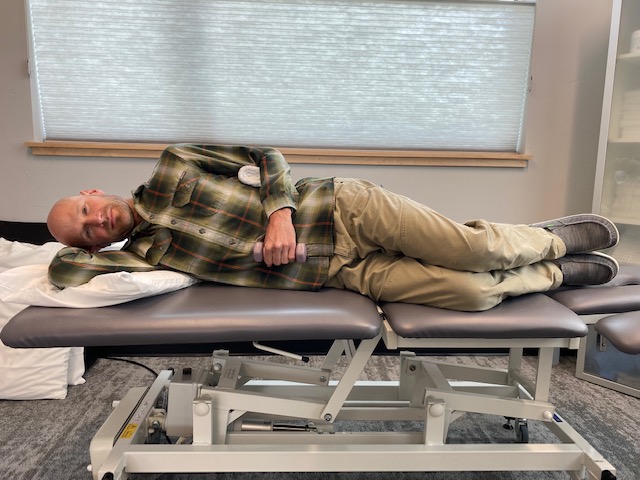As the seasons change in Central Oregon, we often move seamlessly from one recreational activity to the next. Whether you participate in pickleball, tennis, golf, paddle sports, or fly fishing, increasing your shoulder strength can lead to improved performance, greater endurance, and less discomfort. These sports, in particular, place increased demands on your shoulder. This is due to the repetitive nature of the activity, and the biomechanical demands of the sport.
How the Shoulder Functions:
Our shoulders provide us with 360 degrees of movement and are necessary for any activity we perform with our hands and arms. The joint itself is a “ball and socket” joint between your upper arm bone (humerus) and your shoulder blade (scapula). We have large muscles that produce powerful arm movements, such as pushing, pulling, and lifting. These muscles include your lats, pectorals, biceps, and triceps. Our rotator cuff muscles are essential to support the ball and socket joint and are involved in dynamic and overhead motions. A strong rotator cuff allows you to perform powerful and dynamic movements.
What are the Rotator Cuff Muscles?
The rotator cuff is a group of four muscles that attach from the scapula to the humerus. These include the:
Supraspinatus – located at the top of the rotator cuff and is responsible for moving the arm away from the body and out to the side.
Infraspinatus/teres minor complex – located posteriorly and performs external rotation (rotation away from the body).
Subscapularis – has an anterior attachment and is responsible for internal rotation (rotates toward the body).
Although each muscle performs a specific direction of motion, the rotator cuff muscles work together with all movement.
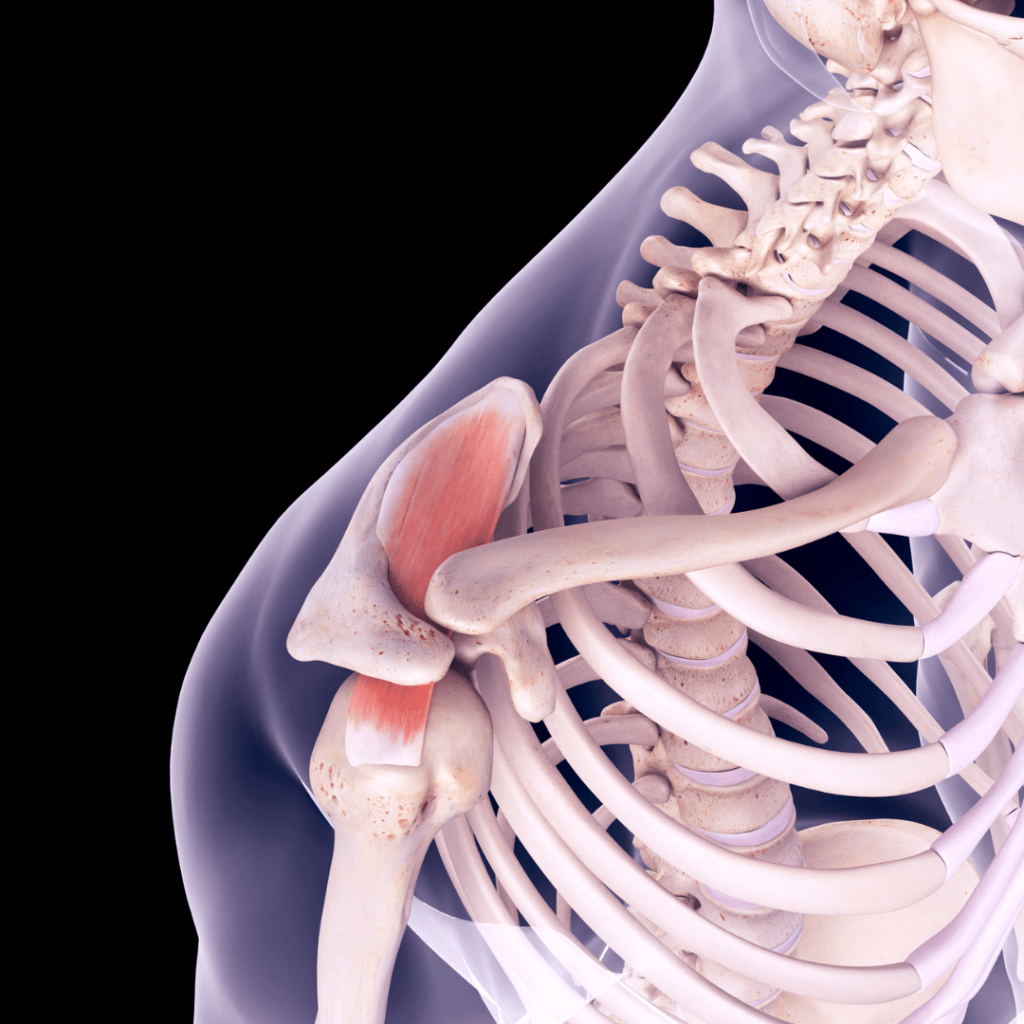
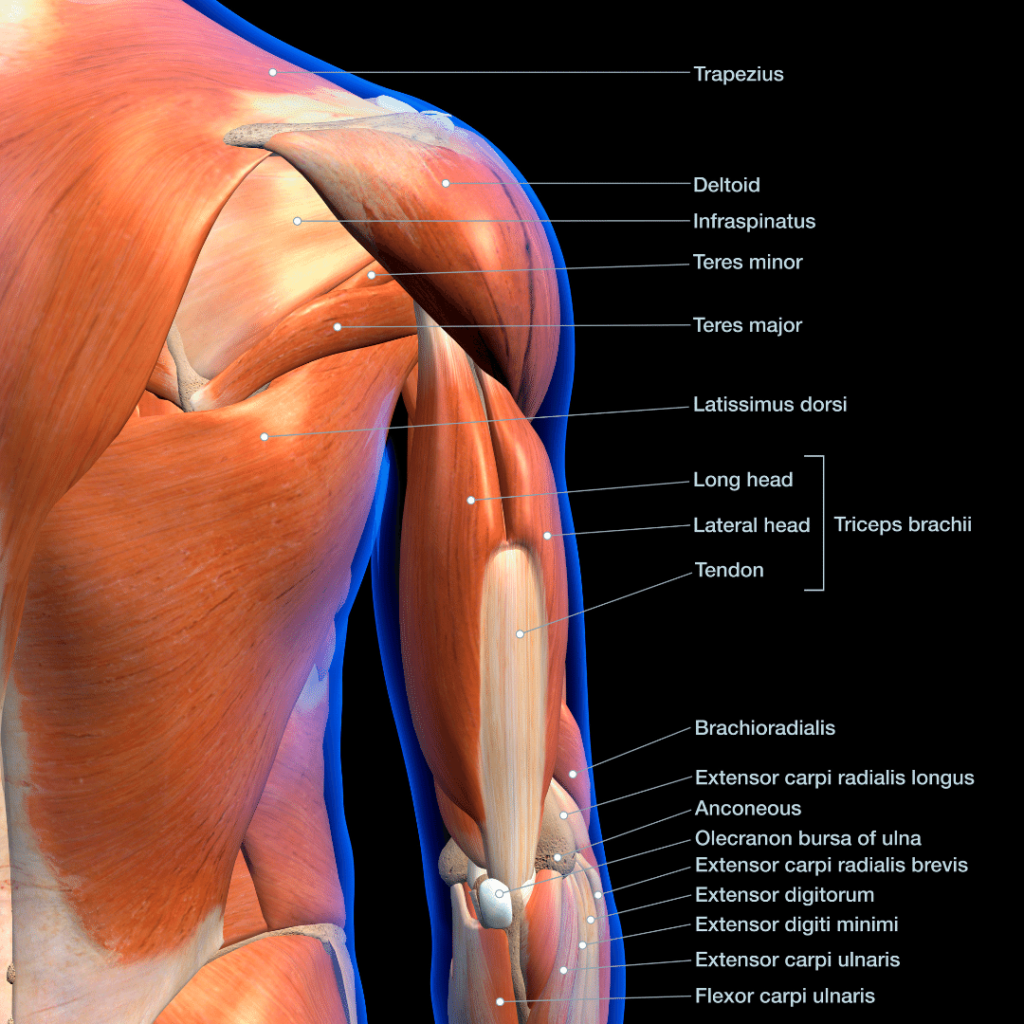
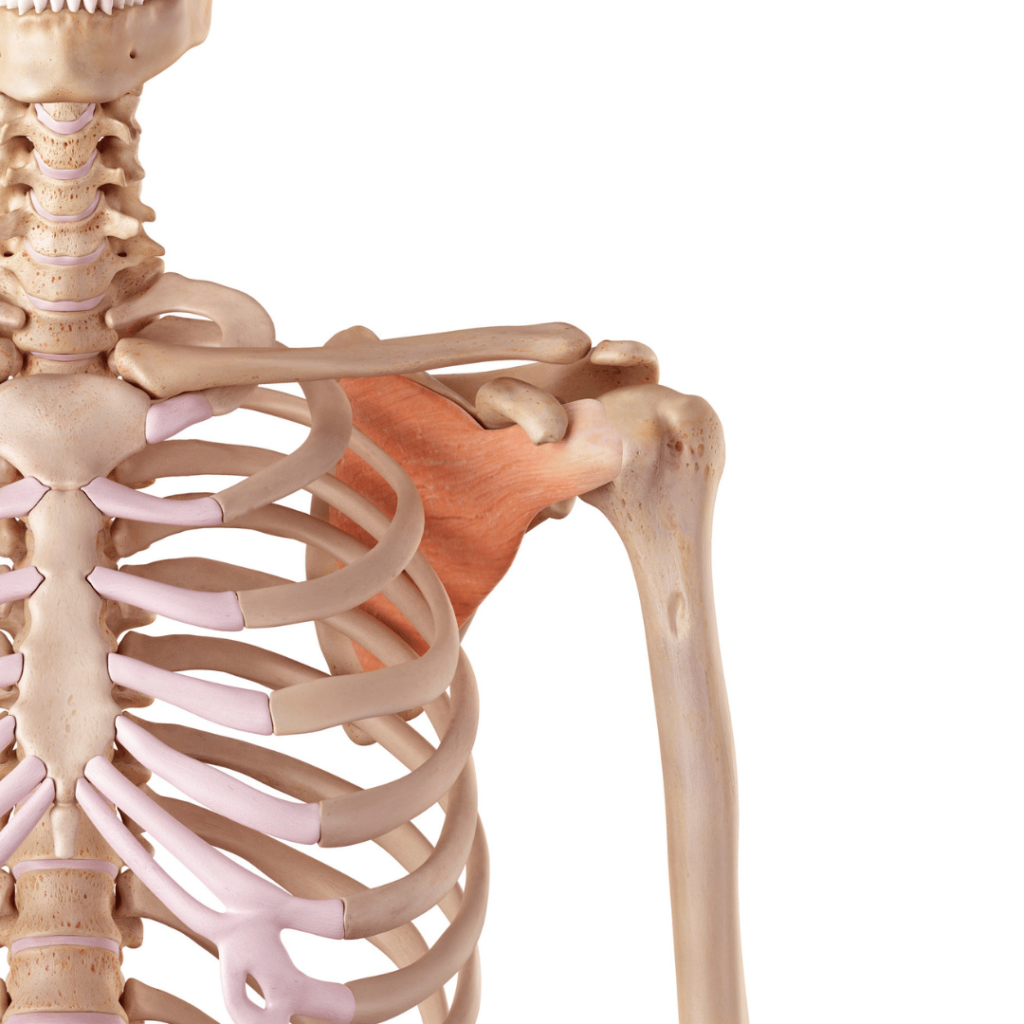
Shoulder Strengthening Exercises
As we previously stated, the dynamic tasks associated with repetitive sports can be associated with increased stress on the cuff, particularly with prolonged repetition, overhead motions, and the use of a racquet. The good news is that plenty of research supports strength exercise in improving both ability and comfort with sports-related soreness and daily shoulder pain. Here are a few exercises that you can do at home or in the gym.
We recommend doing the following shoulder strengthening exercises in three sets of 15 reps. Gradually increase your resistance to work to fatigue. The rotator cuff responds better to lighter weights, keeping the heavier loads for the power muscles.
External Rotation:
Lie on your side with a towel placed underneath your elbow, and the elbow flexed to 90 degrees. Starting with a lightweight (1-2# or a soup can), rotate away from your body, keeping the elbow stable, and move through the axis of the shoulder only. Range of motion can be performed to just above the body at 45 degrees. Avoid any pinching of the posterior shoulder. Slowly return to neutral. As an alternative, you can also use an exercise band and perform standing up.
Internal Rotation:
Using an exercise band (or pulley at the gym) secured in a doorway, start with your arm by your side bent to 90 degrees at the elbow. Start with the arm rotated away from the body, next pull it in towards your body and then slowly return it to the side. Keep the shoulder stable, rotating at the arm only and avoiding the shoulder rounding forward or backward.
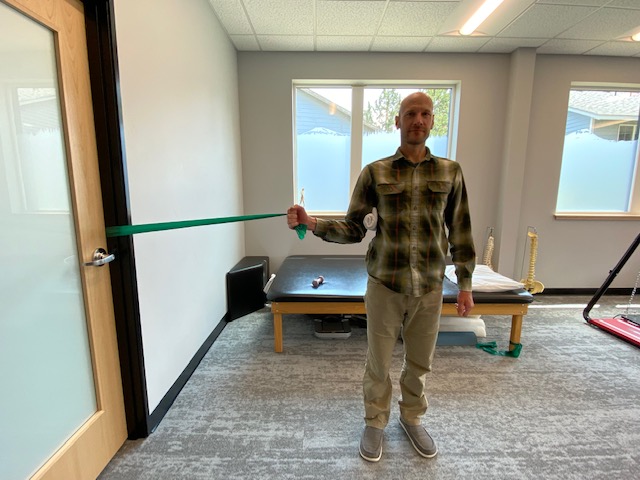

Prone row:
The prone row targets your upper back musculature that supports the shoulder and encourages a synergistic contraction of the rotator cuff musculature to stabilize the shoulder joint. To start, lie on your stomach on a bench (or off your bed) with the arm off the side; grab an appropriate weight to perform 15 reps. Raise the arm to the level of your shoulder, keeping a 90/90 position of your arm. Pause at the level of the shoulder joint. Then return.
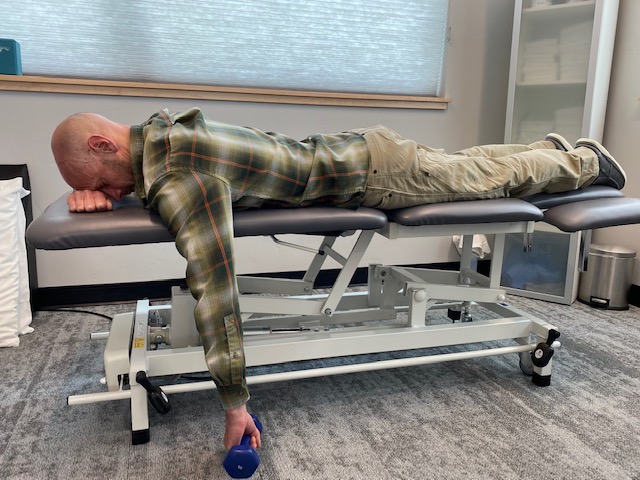
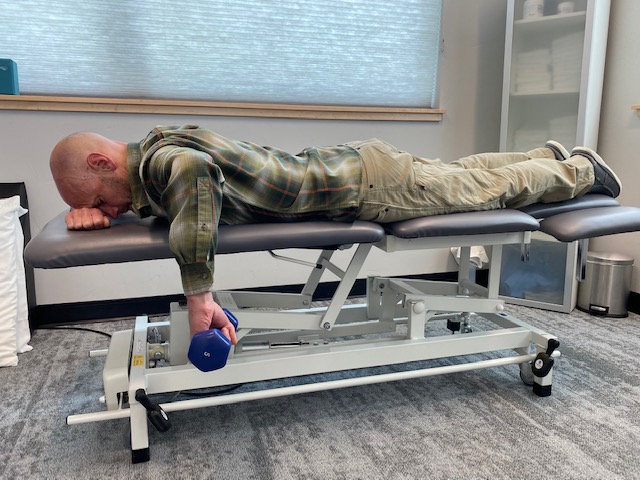
End Range External Rotation and Follow-through:
Standing, place an appropriate resistance band under the opposite foot from the arm you are exercising. You can also use a free weight or a pulley machine. Start with your palm down and pull in a diagonal pattern to shoulder level or higher as you rotate your arm back and overhead. Then slowly return to the starting position. The goal is to perform a smooth and coordinated motion where you are lowering your arm twice as slowly as when you are raising it. Staying mindful of this throughout the exercise allows you to focus on control during the follow-through phase of various sports.
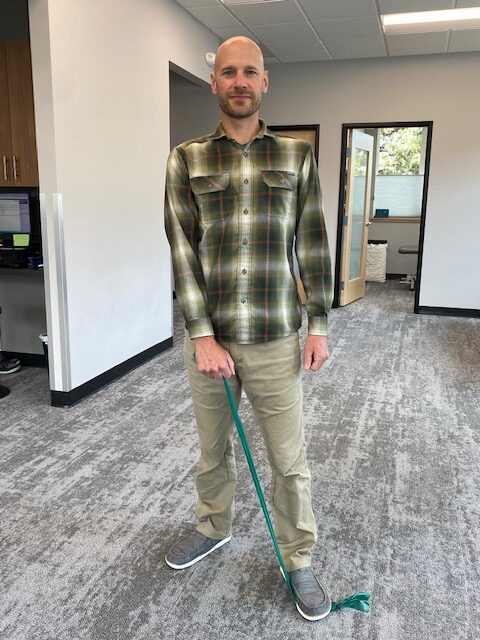
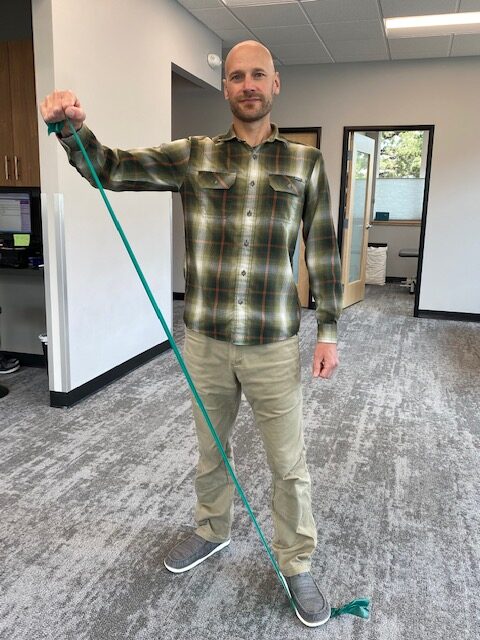
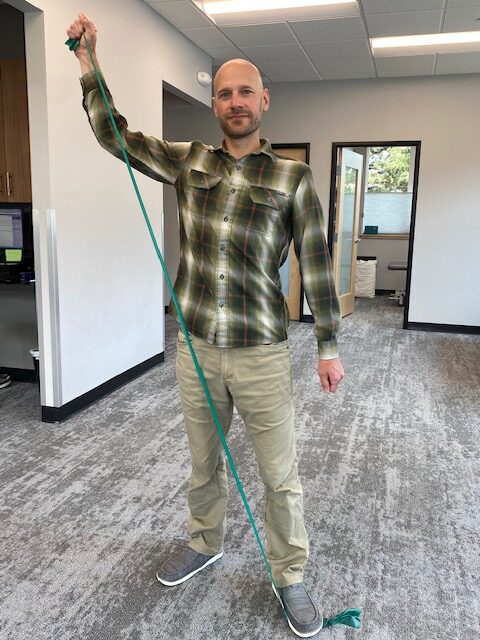
The shoulder strengthening exercises outlined offer a great start to improving your shoulder’s ability. Try to complete them three times a week. With consistency, you should notice improvements within four to six weeks to three months. As with any exercise, allow for rest days as needed. If you are experiencing any pain associated with activity or would like more information on how physical therapy can help you, the team (insert link) at Alpine Physical Therapy is here to help.
We want you to feel your very best this summer. If you have any concerns about your shoulder or want more shoulder strengthening exercises, don’t hesitate to contact us at 541-382-5500. Otherwise, we’ll hope to see you out recreating this summer!

